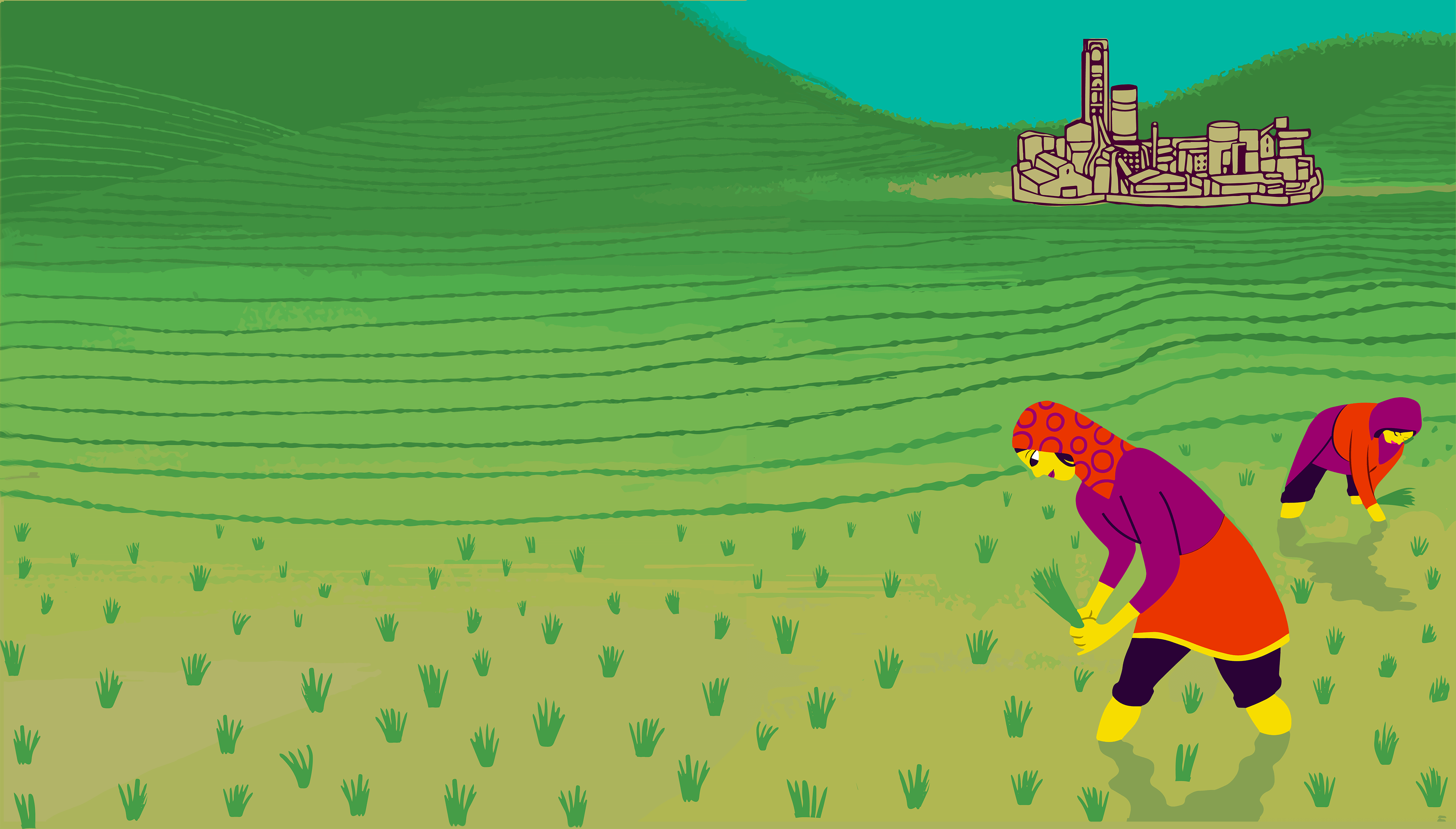Introduction
The prevailing industrial, input-intensive and mono-culture agriculture and food production system exacerbates climate change and harms communities and the environment. Social movements have been denouncing this destructive food production model for a long time.
Environmental rights directly relate to the human right to adequate food and nutrition (RtFN), given the linkages between food, land, territories, and a healthy environment. The deepening global ecological crisis highlights the importance of fertile soils, clean water, wild fish stocks, forests and pollinators for realizing the RtFN of current and future generations. The term “environmental rights” refers to the interaction between human rights and the environment. International environmental law has rapidly evolved since the seminal 1972 UN Conference on the Human Environment in Stockholm. Since then, States have elaborated a large number of multilateral environmental agreements (MEAs), reformed their constitutions to recognize the right to a healthy environment, and begun to establish environmental regulatory frameworks and institutions. Since the 1992 Earth Summit, the efforts at integrating these two fields of law and policy have been described as the “greening of human rights.” This process focuses on clarifying the environmental dimensions of protected human rights.
States’ obligations
The RtFN is essential to achieving social, environmental and climate justice. Sustainability is a key component of the normative content of the RtFN.[35] This opens the door for an examination of environmental impacts that affect the sustainability and the ability of communities and individuals to effectively enjoy the RtFN. The interrelation between environmental rights and the RtFN is increasingly expanding and includes, for instance: the impact of highly hazardous pesticides and industrial food systems, genetically modified organisms (GMOs) and biological diversity, seeds and traditional knowledge, hazardous waste and soils, climate change and greenhouse gas emissions (GHGs) from land use, artisanal fisheries and conservation, forests and carbon sequestration.
Under their RtFN obligations, states must, respect the rights of Indigenous Peoples and other small-scale food producers, including traditional fishers and pastoralists/livestock keepers to their ancestral lands, natural resources and traditional land use. In this sense, all potentially affected communities must be meaningfully involved in all stages of decision-making processes, and their right to free, prior and informed consent (FPIC) must be guaranteed when projects or policies with possible detrimental impacts on the environment are being planned. Protecting small-scale food producers, including traditional fishers, and livestock keepers that manage and use ecosystems sustainably from natural resource-grabbing and environmental destruction is key in order to promote diverse, fresh and healthy food.
States’ legislative frameworks should adhere to the precautionary principle and include measures for the prevention and mitigation of environmental damage. For example, states should have measures and regulations in place to prevent and mitigate water and air pollution, to limit the accumulation of contaminants, and to strictly regulate the use of agrochemicals, including by banning the trade, distribution and use of highly hazardous pesticides. Effective risk management systems as well as environmental monitoring mechanisms should be in place to prevent environmental damage and harm to health throughout food systems.
States’ RtFN obligations regarding the environment also requires them to align their finance, investment, economic, development and other policies with the protection of the environment. States’ extraterritorial obligations have particular importance in this context as many of these policies can have impacts on environmental rights abroad.
Providing access to judicial remedies, as well as redress, which includes compensation, restitution, and restoration for people and communities affected by environmental damage is vital. Such remedy mechanisms should also be made available for affected communities from other countries.
Finally, states have to guarantee a safe and enabling environment for the persons and organizations that promote and defend human rights in environmental matters.
Where to find answers to the questions
Information relevant to the questions may be found in a range of places, including the following:
- Government environmental agency or ministry: These institutions may have public information systems, issue reports and news releases, and other sources of information.
- Laws, regulations, and jurisprudence: National and international databases may help establish baseline information of legal requirements.
- Codes of corporate conduct and reports: These instruments may include information on occupational health issues.
- Pollutant release and transfer registries: These instruments may help access pollution data.
- Interviews with community members and workers, including specific interviews with women or other groups facing discrimination: This methodology can help amplify community voices and testimonies, as well as establish or even uncover facts.
- Press interviews and contacts with journalists: Specialized journalists may have a wealth of information on the situation regarding environmental rights in a specific region or place.
- Academic sources (academics doing participatory research on the topic)
- Traditional community-based institutions such as mothers’ groups, religious groups, farmers’ groups etc.

